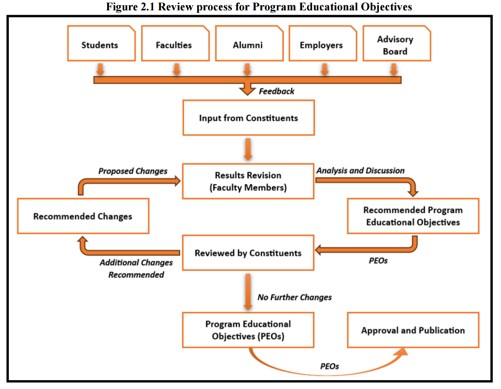Bachelor of Science in Information Systems
Vision
To be one of the most successful Bachelor of Science in Information Systems programs in Saudi Arabia and the Middle East region.
Mission
Through its commitment to excellence and innovation, the Information Systems program strives to expand the horizons of its fields of study and prepare its graduates for fulfilling careers geared toward promoting sustainability through innovative thinking, ethical behavior, lifelong learning, research, and community service.
PROGRAM EDUCATIONAL OBJECTIVES (PEOs)
The Program Educational Objectives (PEOs) of Prince Sultan University’s Information Systems Program describe the broad achievements expected of graduates within a few years of graduation. Developed with input from key constituencies—students, alumni, employers, faculty, and community partners—the PEOs are aligned with ABET expectations and the Prince Sultan University mission.
IS Program PEOs
The offered program ensures that, at completion:
- PEO1: Demonstrate leadership and achieve professional excellence in information systems through higher positions in the job market, entrepreneurial accomplishments or successful graduate studies and industry certifications.
- PEO2: Commit to lifelong learning through continuous professional development, advanced research, and engagement with emerging technologies in the field.
- PEO3: Promote innovation, professionalism, ethical values and responsibility toward the society.
PEOs Mapping with PSU Mission
The matrix below shows the mapping (alignment) between the IS Program Educational Objectives (PEOs) and the Prince Sultan University mission, which emphasizes quality education to international standards, lifelong learning, research, leadership, community engagement, and sustainability.
| Mission Statement of PSU | PEO-1 | PEO-2 | PEO-3 |
|---|---|---|---|
| Prince Sultan University aims to provide the Middle East with quality education to the highest international standards. | X | X | |
| In its efforts towards successful and responsible life-long learning, PSU integrates modern technology, pedagogy, and human values to advance scientific research, productivity, and leadership toward a more meaningful societal role. | X | X | X |
| PSU is committed to effectively managing institutional resources to optimize its multiple roles as a catalyst for new learning opportunities, national and international partnerships, continuous studies, professional growth, community service, and diversity in educational horizons for the good of humanity and sustainability. | X | X | X |
Matrix mapping the IS Program Educational Objectives (PEOs) to Prince Sultan University’s mission
Program Constituencies
The IS Program identifies and engages key constituencies whose input ensures continuous improvement and alignment with PSU’s mission.
- Faculty: Provide academic and curricular input; feedback collected via Faculty PEOs Survey.
- Students: Provide input on learning experiences; feedback collected via Student PEOs Survey.
- Alumni: Share insights on career readiness and industry alignment; feedback collected via Alumni PEOs Survey.
- Advisory Board/Employers: Provide perspectives on industry trends and workforce needs; feedback collected via Advisory Board PEOs Survey, employer surveys, and advisory meetings.
PEOs Review Process
The Information Systems program conducts a formal review of its PEOs every three to five years. The review may be conducted earlier if major changes occur (e.g., new accreditation requirements, industry shifts, or updates to the institutional mission). The process is documented, systematically implemented, and engages key constituencies to confirm continued relevance to PSU’s mission and stakeholder needs.
Steps in the Review Process:
- Input from Constituents: Feedback is collected from faculty, students, alumni, advisory board members, and employers. This ensures multiple perspectives on the effectiveness and relevance of the current PEOs.
- Faculty Review of Results: Faculty members analyze the collected data to identify areas where PEOs may need revision.
- Development of Recommendations: Faculty members propose updated PEOs that better align with stakeholder expectations, the institutional mission, and ABET criteria.
- Constituency Review: Proposed changes are shared with stakeholders for further feedback.
- Decision on Changes: Based on feedback, PEOs are either revised further or finalized.
- Finalization: Approved PEOs are implemented and communicated through the university website and official channels.
IS PEOs Review Process – Every 5 Years
| Constituency | Method of Feedback | Frequency |
|---|---|---|
| Advisory Board | Discussion + Advisory Board Survey | Once every 5 years |
| Alumni | Alumni Survey | Once every 5 years |
| Employer | Employer Survey | Once every 5 years |
| Faculty Member | Discussion + Faculty Survey | Once every 5 years |
| Student | Student Survey | Once every 5 years |

